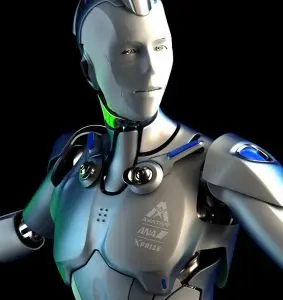Imagine that your parents are aging and need help doing chores around the home. You desperately want to help, but you live a thousand miles away in another city with your own family. So you put on a haptic sensory suit (which gives you the sense of touch through a remote device), some VR googles, and you control a robot installed in your parents’ home. You do chores, like cleaning the kitchen and making the bed. You help your parents and feel less guilty.
Sounds far-fetched, right? Maybe, but it may not be too far off, according to futurist Peter Diamandis. Today, his XPrize Foundation is offering up to $10 million to researchers to develop “real-world avatars”–robots with human identities that can do remote-caretaking sort of work.
“It’s a vision of the future where you don’t have to physically get on an airplane to go someplace,” Diamandis, founder of the XPrize, tells me. “I occupy the robots through my senses, so we can distribute expertise and capabilities where they are needed, almost instantaneously.”

Some of the technology is already here, including the haptic sensor suits that let you feel remotely. A big challenge is making the connection real time, so you actually feel as the remote robot “feels,” Diamandis says. That will require lightening-fast connectivity that we don’t have today. Moreover, the robot will need be predictive, anticipating some of the needs of distant operators.
The award is sponsored by All Nippon Airways (ANA). Teams initially will compete for $1 million prizes before the grand prize, worth $8 million, is given away in the year 2021. Diamandis doesn’t think robot avatars will be accepted fully–that is, in a social, cultural sense–until 2032.
I asked whether we should have any concerns about how human avatars might harm human connection. After all, if we’re all in haptic suits rather than actually touching, won’t it all be a bit, you know, inhumane? Diamandis, known for his super-optimism about the ameliorative role of technology, dismissed the contention completely.
“The reality is there’s still going to be a human being on the other side of the interaction. In the early 1900s, people said, ‘What, you’re going to have this telephone and it’s going to be a disembodied voice?’ They said it wouldn’t work, but it did work.”
Correction: This article has been updated to reflect that under the terms of the X Prize the avatar will have to work from at least 60 miles away.
Recognize your brand’s excellence by applying to this year’s Brands That Matter Awards before the early-rate deadline, May 3.